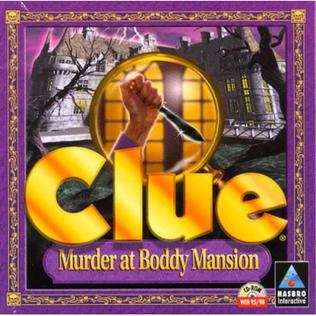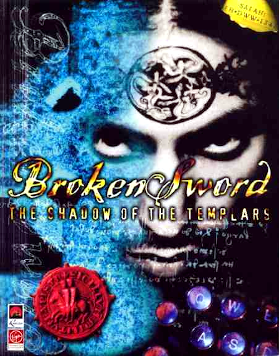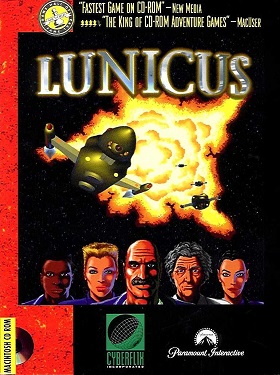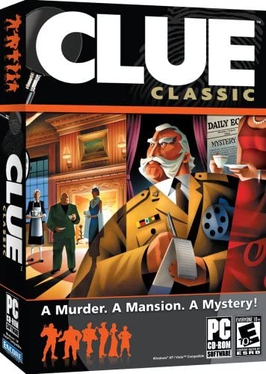
Clue is a 1998 video game based on the board game of the same name. It is also known as Clue: Murder at Boddy Mansion or Cluedo: Murder at Blackwell Grange, depending on whether the country of release used American or British English.

Roberta Lynn Williams is an American video game designer and writer, who co-founded Sierra On-Line with her husband, game developer Ken Williams. In 1980, her first game, Mystery House, became a modest commercial success; it is credited as the first graphic adventure game. She is also known for creating and maintaining the King's Quest series, as well as designing the full motion video game Phantasmagoria in 1995.
The Learning Company (TLC) was an educational software company founded in 1980 in Palo Alto, California and headquartered in Fremont, California. The company produced a grade-based line of learning software, edutainment games, and productivity tools. Its titles included the flagship series Reader Rabbit, for preschoolers through second graders, and The ClueFinders, for more advanced students. The company was also known for publishing licensed educational titles featuring characters such as Arthur, Scooby-Doo, Zoboomafoo, and Caillou.

The Journeyman Project is a time travel adventure computer game developed by Presto Studios.

Blade Runner is a point-and-click adventure game developed by Westwood Studios and published by Virgin Interactive for Microsoft Windows, released in November 1997. The game is not a direct adaptation of the 1982 Ridley Scott film Blade Runner but is instead a "sidequel", telling an original story, which runs parallel to the film's plot, occasionally intersecting with it.

The Lost Treasures of Infocom is a 1991 compilation of 20 previously-released interactive fiction games developed by Infocom. It was published by Activision for MS-DOS, Macintosh, Amiga, and Apple IIGS versions. It was later re-released on CD-ROM, and in 2012 on iOS.

Broken Sword: The Shadow of the Templars is a 1996 point-and-click adventure game developed by Revolution Software. It is the first in the Broken Sword series, co-written and directed by Charles Cecil. The player assumes the role of George Stobbart, an American tourist in Paris, as he attempts to unravel a deep conspiracy involving a sinister cult and a hidden treasure, seeing him travel to various locations around Europe and the Middle East. The game's storyline was conceived to feature a serious tone and heavily influenced by research on Knights Templar by Cecil, but was also interlaced with humor and graphics in the style of classic animated films.

Dragon Lore: The Legend Begins is a point-and-click adventure game released in 1994 by Cryo Interactive for MS-DOS, and later ported to the 3DO video game console. The game was a commercial success, with sales of 300,000 units by 1997. An emulated version was released for Microsoft Windows and macOS in 2013.

Gadget: Invention, Travel, & Adventure is an adventure game designed by Haruhiko Shono and first released by Synergy Interactive in 1993, following his earlier works Alice: An Interactive Museum (1991) and L-Zone (1992). Like Shono's earlier titles, Gadget uses pre-rendered 3D computer graphics and resembles a point-and-click adventure game similar to Myst (1993), but with a strictly linear storyline culminating in a fixed finale. It thus sometimes tends to be classified more as an interactive movie rather than a video game. The story centers around a future dominated by retro technology from the 1920s and 1930s, especially streamlined locomotives and flying machines.

Lunicus is a 1993 computer game developed by Cyberflix and published by Paramount Interactive. It shares many traits in both graphical style and gameplay with some of Cyberflix's other games, like Jump Raven. It was rated as 1993 CD-ROM game of the year in the magazine MacWorld.

Wonderland is an interactive fiction game developed by Magnetic Scrolls and published in 1990 by Virgin Games.

80 Days is a video game developed by Frogwares released in 2005 for Windows, based on the 1873 Jules Verne novel Around the World in Eighty Days.

Club Penguin: Elite Penguin Force is a point-and-click adventure game for the Nintendo DS based on Disney's massively multiplayer online game Club Penguin. It was released in North America on November 25, 2008, in Europe on March 13, 2009, and in Australia on April 16, 2009. In September 2009, a Collector's Edition was released which included upgrades to the game and extras. On March 8, 2012, a German regionalisation of the Collector's Edition was released in Germany.

XPLORA1: Peter Gabriel's Secret World is a musical computer game designed by musician Peter Gabriel.
Haruhiko Shono is a Japanese computer graphics artist for films as well as a video game director. He has served as director for numerous computer games and has provided CG work for motion pictures with Will, Ltd. (有限会社ウイル), where he serves as corporate representative. He is best known to Western audiences for his steampunk-inspired visual novel, Gadget, and for his work on the 2004 film, Casshern.
An adventure game is a video game genre in which the player assumes the role of a protagonist in an interactive story, driven by exploration and/or puzzle-solving. The genre's focus on story allows it to draw heavily from other narrative-based media, such as literature and film, encompassing a wide variety of genres. Most adventure games are designed for a single player, since the emphasis on story and character makes multiplayer design difficult. Colossal Cave Adventure is identified by Rick Adams as the first such adventure game, first released in 1976, while other notable adventure game series include Zork, King's Quest, Monkey Island, Syberia, and Myst.
Graphsim Entertainment was founded in 1991 as Graphic Simulations Corp. to develop and publish simulation games. Graphsim's first product was Hellcats Over the Pacific for the Macintosh. It was released in 1991 and developed by Parsoft Interactive.

Clue Classic is a single-player, interactive video game based on Hasbro's Cluedo franchise. It was developed by Games Cafe and published by Reflexive Entertainment on June 3, 2008.

Synergy Inc., which went by the trade name Synergy Geometry Co., Ltd., was a Japanese video game developer and publisher headquartered in Shinjuku-ku, Tokyo. The company is best known for its point-and-click adventure games, which employed pre-rendered 3D computer graphics, including Alice: An Interactive Museum (1991) and Gadget: Invention, Travel & Adventure (1993), both of which were designed by Haruhiko Shono.















